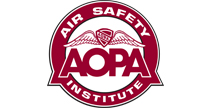Just wait
cen11fa247
 By David Jack Kenny
By David Jack Kenny
One of the clichés of accident investigation is that the wreckage is usually recovered in good weather. While large areas of foul weather can ground light aircraft for days, it’s fairly rare. Most meteorological hazards are transient. Frontal boundaries pass, thunderstorms move through, and turbulence eventually subsides. The conditions that consistently lead to the most accidents, low ceilings and poor visibility, are followed by clearing skies, and in most of the country, it typically happens quickly.
About 1 p.m. on March 27, a landowner near Dickens, Texas, found the charred wreckage of an airplane in one of his fields. It appeared to have hit the ground and slid through a barbed-wire fence before being consumed by fire. Eventually it was determined to be a 1946-model Stinson 108, and the three people who died in the crash were identified as its 40-year-old owner and his parents. They had taken off from the pilot’s private strip about a mile and a quarter away on the first leg of a 280-nautical-mile trip southeast to Rockdale. The time of the accident is not known, but the pilot’s wife told investigators that he’d planned to leave about 5:30 a.m. that day.
If in fact they did, things would have been good and dark. The U.S. Naval Observatory calculated that civil morning twilight didn’t start until 7:13 a.m., and while a waning crescent moon had risen, it’s doubtful they were able to see it. There is no record of weather conditions at the accident site, but overcast ceilings were reported at airports 52 nm west, 53 nm northeast, and 59 nm south of the scene about that time. Visibilities were four to five miles in mist, and the air was cold and damp, with temperatures just two degrees Celsius above the dew points.
The 600-hour pilot was not instrument-rated, and it’s a near-certainty that the Stinson wasn’t equipped for instrument flight. With few lights on the ground in rural Texas, the darkness alone could have made it difficult to maintain orientation, but there were bigger problems as well. The overcast ceilings that blanketed the area were reported at 500 feet just before 6 a.m., and in the next hour they came down to 300. On top of that, the chill and moisture were “conducive to serious icing at cruise power,” according to the FAA’s chart of carburetor icing probabilities.
Many questions about this accident remain unanswered. The official reports don’t indicate why the pilot chose to leave before dawn on such a dark night. There’s no record that he ever got a formal weather briefing, but we don’t know what informal sources he might have checked. The nearest terminal forecasts turned out to be a little optimistic, though still low enough to raise concerns. Lubbock was forecasting a 700-foot overcast ceiling with six miles visibility, with skies clearing by noon. At Childress, the overcast layer was predicted to be at 900 feet. The next terminal forecasts weren’t issued until 6:39 a.m., about an hour after the pilot’s wife said he had planned to depart. Both called for a 300-foot overcast, again clearing by noon.
No airport within 50 miles has an AWOS or ASOS frequency. The NTSB’s statement of probable cause said that it was “obviously instrument conditions,” but in the darkness and mist the ceilings were probably hard to judge. It’s impossible to tell whether the pilot found himself in the clouds and succumbed to spatial disorientation, tried to come back and land but couldn’t find his private strip in the dark, or mistook an open field for his landing area. It’s also possible that his engine began to lose power. The investigators concluded that it was running at the moment of impact, but the likelihood of carburetor ice leaves room to doubt that it was producing its full 150 horsepower.
The record is clear on one point, though. Lubbock’s second terminal forecast was still somewhat optimistic. Visibility, predicted to stay at three miles, dropped to three-quarters of a mile by 8:15 a.m. The skies didn’t actually clear until almost 2 p.m.